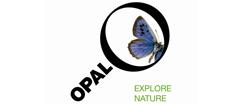Populations and succession
A population is a group of organisms of the same species occupying a particular space at a particular time that can potentially interbreed.
In any ecosystem relationships are dynamic, usually moving from colonisation (pioneer) to climax communities in a process known as succession.
At each stage in succession certain species may be recognised which change the environment so that it becomes more suitable for other species with different adaptations. The new species may change the environment in such a way that it becomes less suitable for the previous species.
A range of factors will affect the dynamic equilibrium of ecosystems and the process of succesion and conservation of habitats frequently involves management of succession.
A level biologists need to be able to explain what is meant by succession, often with examples from provided case studies.
Whilst this list provides a source of information and ideas for experimental work, it is important to note that recommendations can date very quickly. Do NOT follow suggestions which conflict with current advice from CLEAPSS, SSERC or other recent safety guides. eLibrary users are responsible for ensuring that any activity, including practical work, which they carry out is consistent with current regulations related to Health and Safety and that they carry an appropriate risk assessment. Further information is provided in our Health and Safety guidance.
Introduction to Lowland Heathlands
This resource package provides an interesting and engaging lesson on a specific habitat. Working in groups, each member of the group visits a particular station. They need to complete a particular activity at this station and then share this information with the rest of their group. Every student then sits an individual quiz about the particular habitat which will require them to make use of information from all the stations. The quiz questions as written do not make specific reference to succession or climax communities; these could easily be amended to include the relevant terms.
All the materials for setting up each station are provided, along with answers to all questions asked at the stations. There is also a PowerPoint to introduce this activity to students.
Funky Pigeons
This is a very comprehensive resource from the Linnean society that considers many aspects of inheritance and selection, including colonisation and succession.
The pack contains three lessons worth of activities, with lesson plans, activities, PowerPoint’s, required resources and answers to questions set.
The teacher's pack contains references to the parts of the A level biology specifications which are covered by this pack. Whilst this will now be out of date, it clearly demonstrates what an extensive resource this is.
It would be perfectly feasible to use the pack exactly as it is presented, alternatively particular activities could be extracted for use both in class or as homework/directed learning.
Populations
This resource package from the Wellcome Trust contains a number of different pieces of material. The issue of the Big Picture focuses on the topic of populations, including articles on evolution, migration, epidemiology, demographics and population genetics. Students could be asked to work in pairs and read/review particular pages to then summarise these for the rest of the class. The population problems on pages 12 onwards could be copied and laminated and handed to students to initiate a starter discussion activity.
There is also an animation on surveying populations. This looks at how different sampling techniques can be used to gather information on population changes in native upland woodland. Buttercup population sampling techniques shows students gathering data on buttercup populations in different areas using a multimeter to measure abiotic factors, collecting soil samples and using random sampling.
Both of these provide useful practical knowledge to link to any questions on succession, which often ask students to describe how they would investigate the process.
Investigating the Concept of a Niche *suitable for home teaching*
This question sheet was originally compiled for use with AQA A level specifications; it will however be useful across awarding organisation specifications. The questions would be useful as homework/directed study questions; students could peer assess each other’s and then be provided with the answer sheet to self assess and ensure they have a complete set of correct answers.
The focus of this resource is on the concept of an ecological niche. Students investigate the idea of a niche and look at the concepts of a fundamental niche and a realised niche. They are also asked to use information on a particular species’ niche, to predict where we may find this organism, and how its population may change.




